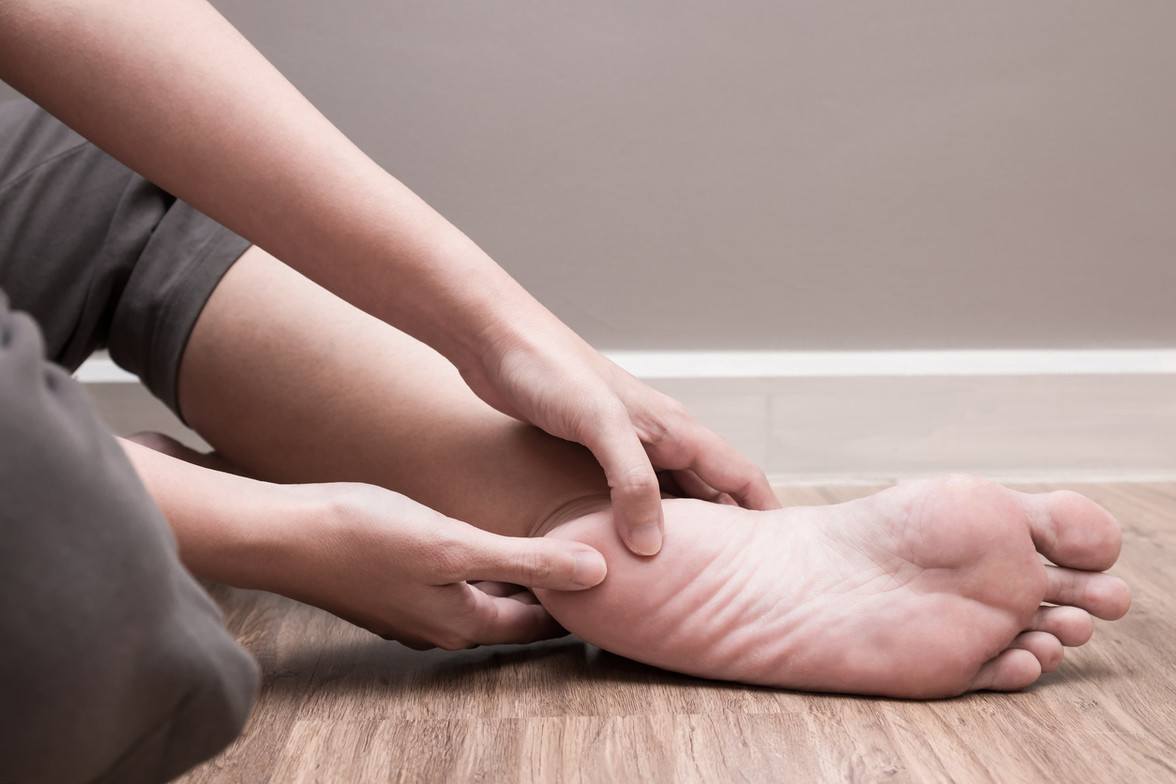
Plantar Fasciitis
Sometimes that first step in the morning is a challenge, those first few steps agony, never mind the rest of your day. Walking can be tough, never mind playing sports or even just standing from long periods. If this sounds like familiar, you may be struggling with a condition called plantar fasciitis. Not to worry there is help right here in Winnipeg.
What exactly is plantar fasciitis?
Plantar Fasciitis involves pain and inflammation of a band of tissue, called the Plantar Fascia, which runs across the bottom of your foot —connecting your heel bone to your toes. The plantar fascia is a thick, dense tissue with limited blood supply. This limited blood supply is important because it means that it is more difficult for your plantar fascia to heel from either acute or repetitive injuries. Because we chronically put a strain on our plantar fascia it can become worn and frayed (think of the knees on an old pair of blue jeans) this chronic condition is called plantar fasciiosis/
Plantar Fasciitis/osis causes stabbing pain that often occurs with your very first steps in the morning. The pain can be severe; people commonly report their first step morning pain (FSMP) as7-8/10 with 10 being excruciating pain.
Once your foot limbers up, the pain of plantar fasciitis sometimes decreases, but it may return after long periods of standing, getting up from a seated position, or running/walking. Overtime, the pain can become more persistent until you dread almost every step.
2. What are the causes and symptoms
The causes and symptoms are varied, but below is a list of reasons we find to be common in our patients.
- Tight calves will increase tension on the Plantar Fascia.
- Excessively flat or high arches.
- Lack of big toe extension- Upward movement of the big toe.
- Tight hip flexors will reduce the ability to use your buttock muscles in ‘push off phase of the stride, hence increasing the workload on the Plantar Fascia and calves.
- Reduced glute and hamstring strength will again increase the demand on the calves and Plantar Fascia, predisposing to an overload of these structures.
- Walking barefoot on hard surfaces
- Improper running/walking technique
- Worn-out/Improper shoes
- Increased distances of walking or running too soon.
- Standing on hard surfaces for a prolonged period
3. When should you seek help and How do we evaluate the problem (tests, x-rays, etc.)
You should seek professional attention if your pain lasts longer than a week or so, if there was a traumatic cause of the injury, or the pain is so intense it is significantly affecting your activities of daily living .X-rays are not always warranted but may rule out/in a heel spur. Depending on the severity of the heel spur, it can make treatment of Plantar Fasciitis more difficult. The longer you suffer from foot pain, the harder it can be to treat and resolve. Plantar fascia pain tends to become chronic, sothe sooner you address your heel pain, the more likely you will get relief quickly.
4. What is the ordinary course of treatment from the most conservative to surgery?
The ideal course of care for Plantar Fasciitis is to start conservatively and progress from there. Conservative treatment plan lengths may vary depending on severity, how long it has been going on, previous occurrences of it, and many other factors that would be discussed with you at the time of history and examination.
Stretching for the Gastrocnemius (upper calf), Soleus (lower calf),hip flexors (front of the hip) and the Plantar Fascia are important. Secondly, you need to be evaluated to determine if you have excessively flat or excessively high arches. If you have flat feet, an orthotic may be beneficial. Manual therapy such as massage, Active Release Techniques to the calves, Achilles, and Plantar Fascia are sometimes useful in relieving pain. Strengthening of the glutes and hamstrings(along with hamstring flexibility) are vital to the proper biomechanics of the lower extremity.
CLICK HERE FOR A SAMPLE OF EXERCISES FOR PLANTAR FASCIITIS.
Shockwave is a new treatment to the clinic and has been very helpful at resolving even persistent cases of plantar foot pain. Some studies suggest that 80%of patients enjoy significant relieve in as few as four sessions. This treatment has been so effective that it is one of our “go to” treatments for plantar foot pain.
CLICK HERE FOR MORE INFORMATION ABOUT SHOCKWAVE
5. How can you avoid this condition?
From a physical standpoint, the best way to prevent Plantar Fasciitis is to address the causes by performing stretches and exercises to correct any of the above dysfunction. Runners, walkers and those who stand on hard surfaces for long periods, tend to get this condition the most in my experience, so proper technique, footwear, mileage increases, and surfaces should be addressed and improved as much as possible.



